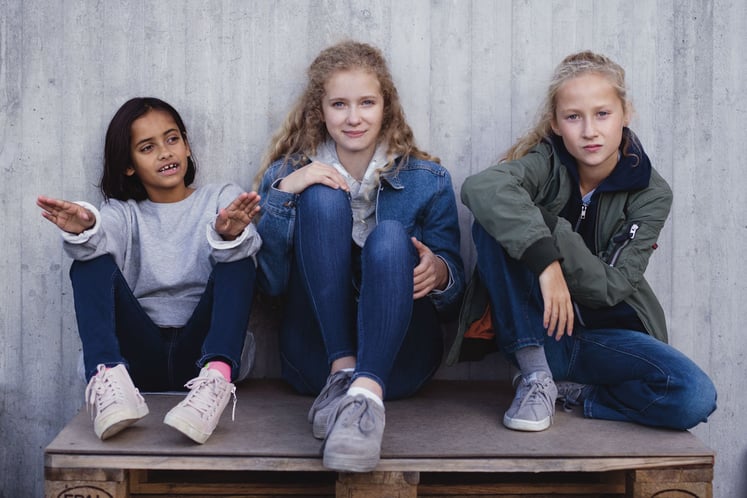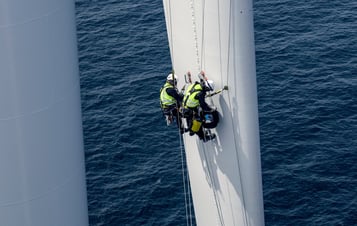UN development goals
In 2016, based on our materiality analysis, an analysis of our strategic objectives, and internal dialogues and workshops, Vattenfall identified six goals that are most relevant to the company and to which it can provide the most meaningful global contribution. They continue to be our six prioritised UN sustainable development goals to this day.

Sustainable development goals
The United Nations' sustainable development goals are a call for action to promote prosperity while protecting the planet.
Our prioritised UN goals
7
Affordable and clean energy9
Industry, innovation and infrastructure11
Sustainable cities and communities12
Responsible consumption and production13
Climate action17
Partnership for the goalsVattenfall also affects several other goals locally (for example: 5-Gender equality, 14-Life below water, 15-Life on land) or via suppliers (for example 6-Clean water and sanitation, 8-Decent working conditions and economic growth, 10-Reduced inequality).
How is Vattenfall going to achieve the six prioritised goals?
Goal 7 Affordable and clean energy is central to our portfolio of energy production assets. Fossil-free electricity generation is our foundation for value creation.
Vattenfall has continued to grow and develop its clean and affordable energy pipeline that span various renewable energy sources and technologies, such as wind farms, solar parks, and battery storage. Currently, Vattenfall operates 5.4 GW of installed capacity in wind and solar power.
Vattenfall has been using Life Cycle Assessments as a tool to evaluate and map the environmental impact of electricity generation activities from a full value chain perspective since the early 1990s. Customers in key markets are able to buy electricity with verified environmental data from certified Environmental Production Declaration (EPDs).
Vattenfall develops new products that enable customers to generate their own energy (solar, heat pumps) and even sell it to Vattenfall or others (PowerPeers). In the Netherlands, Vattenfall has joined a network with other large companies to share learnings on social billing and prevent debts becoming problematic. Together with for example insurance companies, banks, several cities and municipalities like Amsterdam and Almere, Vattenfall finds solutions that prevent customers from falling into the financial debt trap.
Goal 9 Industry, innovation and infrastructure is the goal where Vattenfall has initiated various new partnerships and projects, such as collaborations with energy-intensive Swedish industries like SSAB/LKAB. Vattenfall has developed and maintained energy infrastructure for years. Hence, sustainable retrofitting activities, such as those in our heat operations in the Netherlands or upgrades, like those in our hydro operations, are core to our business.
Goal 11 Sustainable cities and communities. Vattenfall’s cooperation with Uppsala is a good example of realising a common climate target with a city (the climate protocol was unique in nature and very much before its time and has now been followed by a renewed cooperation agreement).
We strive to invest in infrastructure (electricity, district heating with renewable fuels and waste incineration, remote cooling, e-mobility charging) and collaborate with consumers, politicians and businesses in the cities. The goal also includes “safeguarding the world's cultural and natural heritage”, which is reflected in Vattenfall’s cooperation with local communities, such as Pen y Cymoedd and Sami, and former Sorbs in Eastern Germany.
Goal 12 Responsible consumption and production fits hand in hand with our purpose to enable fossil freedom that drives society forward. We want to make it possible for our customers to move, make and live fossil free so we are transforming the way we consume resources and produce energy.
When designing, procuring, and constructing energy infrastructure, we work to reduce the use of primary raw materials and favour materials which are fossil-free, recycled or biogenic. For example, on Hollandse Kust Zuid wind farm, we have incorporated a portion of wind turbines which have recyclable blades Vattenfall strives to maximise the value of resources in its value chain, such as using excess heat from various third parties for local heating networks. For example, AstaReal’s algae cultivation is now heating up to 2,500 apartments in Gustavsberg, Sweden.
Resource efficiency, reduction of hazardous chemicals, waste, emissions to air and water are also relevant to Goal 12. Vattenfall is working in several ways to contirubte in these areas, for example by substituting creosote poles in Distribution with new modern poles. There also are continuous discussions and follow-up with the business on chemicals and waste connected to circular economy. Read more on Vattenfall's resource management.
Goal 13 Climate action. Vattenfall is taking action today and is committed to reducing emissions. Our focus and our purpose to enable fossil freedom is completely in line with this goal. Vattenfall’s CO2 roadmap outlines in detail how and when we aim to reach net zero and limit global warming to 1.5 °C.
Furthermore, wind power initiatives, the conversion of the lignite plant Klingenberg to gas, customer offerings such as EnergyWatch and heat pumps, clear product declarations such as EPD, collaborations with suppliers and customers and attracting energy-intensive industries, such as data centres, to Sweden from countries with a higher share of fossil in its electricity production are proof points and success stories of our commitment.
Goal 17 Partnerships for the goals. Major cooperation is in many ways a prerequisite for success, as the goals need to be on a large scale to have global impact. Vattenfall has intensified cooperation with other players. For example, Vattenfall was a founding member of the First Movers Coalition and advocates of the now signed the International Responsible Business Conduct Agreement for the Renewable Energy Sector.
Whether it is on multinational or local level, we apply this partnership approach to the electrification of the transport sector and industries, the construction of wind power and providing our customers with sustainable products in cooperation with for example Brainheart and Varmt & Skönt in Sweden, as well as helping our larger customers achieve sustainable production through large scale industry decarbonisation.
Related content

The sustainability policy and governance measures are part of our management system.

Sustainability ratings are an increasingly important consideration for investors.

We are responsible for respecting all internationally recognised human rights agreements.



